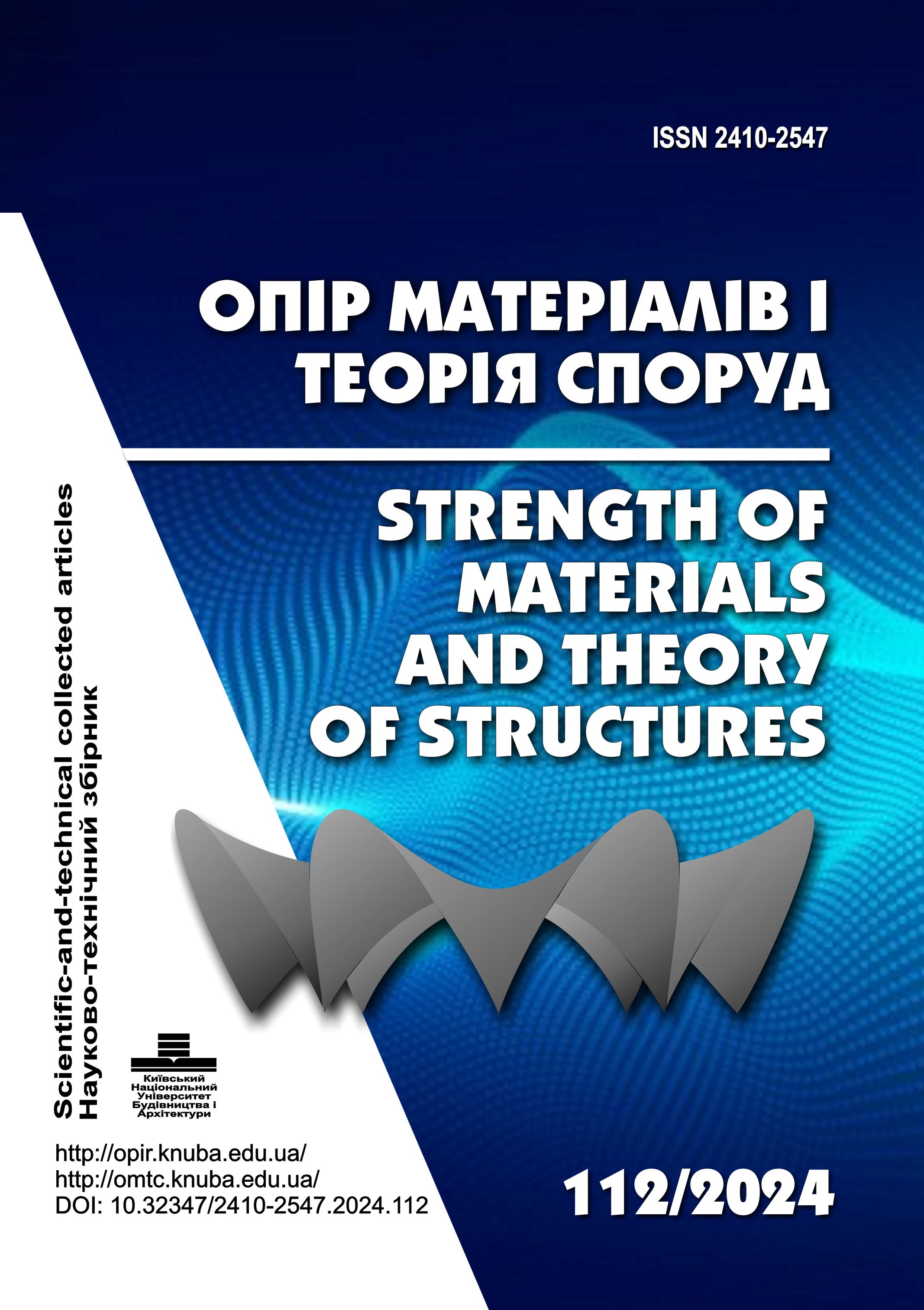Study of the thermal effect of fire on fragments of reinforced concrete columns based on the results of experimental tests
DOI:
https://doi.org/10.32347/2410-2547.2024.112.202-208Keywords:
reinforced concrete column, test, small fragment, compact fire installation, experimental study, temperature, Fisher's testAbstract
The paper analyzes the thermal effect of fire on fragments of reinforced concrete columns based on their heating according to the standard fire temperature regime in a small-sized installation for the study of the thermal effect of fire on building structures. Based on the proposed method, a technique was created that makes it possible to estimate the fire resistance limit of a full-size structure by calculation. The course and results of the conducted fire test are described, and the adequacy and reproducibility of the experimental data are verified. The temperature distribution over the entire area of the fire furnace, the studied fragments was analyzed and the obtained results were processed. The possibility of creating a standard fire temperature regime in the fire furnace chamber has been verified. According to the results of this work, it was established that the heating of the structure at all levels was uniform in the planes of placement of thermocouples, the maximum temperature on the surface was 709 °C, it was observed at the last minute of the experiment and continued to increase linearly, the maximum temperature reached in the center of the rock column was 105 °C, it was observed at the last minute of the experiment and continued to grow linearly; The adequacy of the experimental data was confirmed: the relative deviation did not exceed 4%, and the calculated adequacy criteria (Fisher, Student and Cochrane) were below the critical value.
References
DSTU В.1.1-4-98*. Fire Protection. Building Constructions. Fire Resistance Test Methods. General Requirements, 1998.
Building Code B.1.1-7-2016 «Fire safety of construction sites. General Requirements» (2016).
DSTU B V.1.1–13: 2007 Zakhyst vid pozhezhi. Perekryttia ta pokryttia. Metod vyprobuvan na vohnestiikist (EN 1365-3: 1999, NEQ). Kyiv, 2007 [in Ukrainian].
Perehin, A., Nuianzin, O., Borysova, A., & Nuianzin, V. (2022). Results of Experimental Investigations of Reinforced Concrete Wall Elements According to the Standard Temperature Mode of Fire. In Materials Science Forum (Vol. 1066, pp. 206–215). Trans Tech Publications, Ltd. https://doi.org/10.4028/p-18th69
Perehin, A., Nuyanzin O. (2021). Etapy stvorennya prototypu vohnevoyi ustanovky dlya vyznachennya. [Stages of creating a prototype of a fire installation for determination of temperature distributions of small figures of reinforced concrete structures]. Nadzvychayni sytuatsiyi: poperedzhennya ta likviduvannya» : zb. nauk. pratsʹ. – Cherkasy:CHIPB NUTSZ. T.5, No 2 S. 75-82. [in Ukrainian].
Veselivskyi, R B.; Polovko, A. P.; Vasylenko, O. O. (2013). Eksperymentalne doslidzhennia vohnestiikosti ohorodzhuvalnykh konstruktsii z fibrolitovymy plytamy. [Experimental research of enclosing constructions fire resistance with plasterboard panels] Fire Safety, 23, 33–38. [in Ukrainian].
Demchyna, B. H., Fitsyk, V. S., Polovko, A. P., Pelekh, A. B. (2006). Pich dlia teplofizychnykh vyprobuvan malohabarytnykh frahmentiv budivelnykh konstruktsii ta okremykh vuzliv yikh stykovykh ziednan. .[Furnace for thermophysical testing of small fragments of building structures and individual components of their butt joints]. Pat. 17160 Ukraina.
Nuianzin, O., Kryshtal, D., Zemlianskyi, O., Nesterenko, A., & Samchenko, T. (2020). Study of the Heat and Mass Transfer in Special Furnaces During Fire Resistance Tests of Building Construction. In International Scientific Conference on Woods & Fire Safety (pp. 179-184). Springer, Cham.
Nuianzin, O., Tyshchenko, O., Zhartovskyi, S., Zaika, P., & Peregin, A. (2019). The research of carrying capacity of reinforced concrete walls under uneven warming. In IOP Conference Series: Materials Science and Engineering (Vol. 708, No. 1, p. 012063). IOP Publishing.
Downloads
Published
Issue
Section
License

This work is licensed under a Creative Commons Attribution 4.0 International License.
Authors retain copyright and grant the journal right of first publication with the work simultaneously licensed under a Creative Commons Attribution License that allows others to share the work with an acknowledgement of the work's authorship and initial publication in this journal.

